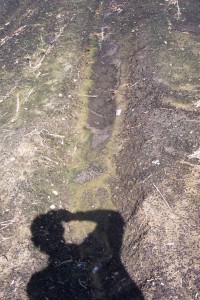What would happen if our pesticide risk assessments were so scientifically advanced that assessors knew not only exactly how many people would be harmed by a particular pesticide but also which individuals would be harmed? A permit to release a carcinogenic pesticide into the food system, for instance, would be preceded by a list of those who would contract the cancer. This, however, would constitute premeditated murder… However, bureaucrats and the private sector routinely ‘get away’ with this premeditated murder because the victims are individually anonymous. – Merrell and Van Strum (1990, as cited in O’Brien, 2000, p. 80)
 Across the country, environmental justice communities face life threatening pollution and health assaults. Unequal protection, scarce resources and capacity, and a history of inequitable working relationships and partnerships mire the lives of these communities.
Across the country, environmental justice communities face life threatening pollution and health assaults. Unequal protection, scarce resources and capacity, and a history of inequitable working relationships and partnerships mire the lives of these communities.
While thousands of communities have organized to fight for environmental health and other quality of life issues, too few have succeeded in linking environmental exposures to poor health and other quality of life impacts. This is due in large part to a national research complex that has done little to make this linkage.
Although science has determined the health effects that are probable should exposure occur for thousands of specific chemicals and toxic metals; EPA, ATSDR, state regulatory agencies and health departments rarely make the link even when pollution is present and illnesses mirror probable health effects.
Risk assessment models used by regulators and environmental health researchers prevent policy makers from taking the true long-range health effects of environmental pollutants into account. This has led to thousands of communities of color and poor communities living with polluting industries, sometimes virtually in their back yards. Traditional research models, however, also contribute to this deficiency. The top down research model has robbed science of core knowledge that can only be gained from the organic involvement of victims of environmental assaults.
Pesticide exposure, factory runoff, the toxicity of the built environment – all these are issues that the SCRC, via community based participatory research methods and others, seeks to address. By providing community organizers with the tools to address public policy makers as well as partnering with universities and other organizations who have access to the research mechanism through which the said communities can best address environmental risks, the SCRC seeks to be a bridge that will narrow the current equity gap and make true environmental justice a reality for all.

